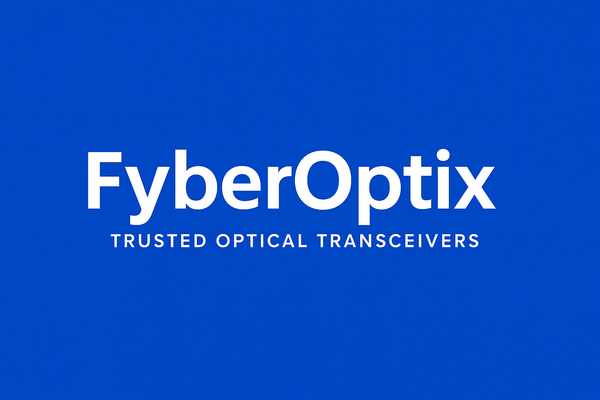What Is an SFP Module? Complete Guide to Small Form-Factor Pluggable Transceivers
What Is an SFP Module? Complete Guide to Small Form-Factor Pluggable Transceivers
Small Form-Factor Pluggable (SFP) modules are essential components in modern networking, enabling high-speed, reliable data transmission between switches, routers, and other network equipment. But what is an SFP module exactly, and how does it work?
In this guide, we’ll break down what an SFP is, the different types available, how they’re used, and why they matter in your IT infrastructure.
What Does SFP Stand For?
SFP stands for Small Form-Factor Pluggable, a compact, hot-swappable transceiver used to connect network devices like switches, servers, and media converters. SFP modules support both fiber optic and copper connections, making them highly versatile across a range of network architectures.
Often referred to as mini-GBICs (Gigabit Interface Converters), SFP modules offer scalable, plug-and-play solutions for expanding network connectivity without major hardware changes.
How SFP Modules Work
SFP modules function by converting electrical signals from a switch or router into optical or copper signals that can travel through various transmission media. They are inserted into SFP ports found on networking hardware and come in multiple variants to support different cable types, distances, and speeds.
Because they are hot-swappable, SFPs can be replaced or upgraded without shutting down the entire network—offering both convenience and flexibility.
Types of SFP Transceivers
SFP modules are categorized based on their speed, distance, wavelength, and media type. Copper SFP modules like 1000BASE-T and 1000BASE-TX are designed for Gigabit Ethernet over Cat5e or Cat6 cables, typically used for distances up to 100 meters.
Fiber optic SFP modules are available in both multimode and singlemode variations. Multimode SFPs usually use 850nm wavelengths and are suitable for short-range applications up to 500 meters. Singlemode SFPs operate using 1310nm or 1550nm wavelengths and can support transmission distances from 10 kilometers to over 100 kilometers, depending on the specific module type.
With such a wide range of options, SFP modules can meet almost any networking requirement, from short-reach server rooms to long-haul metro or backbone links.
SFP Compatibility Explained
SFP module compatibility can be a confusing topic for IT professionals. While many SFPs follow a common Multi-Source Agreement (MSA), allowing interoperability between vendors, not all devices accept third-party modules.
Some switches enforce vendor lock-in, rejecting non-OEM SFPs unless compatibility is manually configured or bypassed. Firmware updates can also impact compatibility with third-party modules. For reliable performance, the module’s coding and EEPROM must match the expected hardware ID and settings of the host device.
To avoid issues, network professionals either use MSA-compliant third-party SFPs with guaranteed compatibility or stick with a single vendor to ensure seamless operation across devices.
Applications of SFP Modules
SFPs are used in a wide range of networking scenarios. They can connect switches, link routers to fiber backbones, extend LANs and WANs, interconnect data centers, power passive optical networks, and support high-resolution video or audio transmission.
Thanks to their modular design, SFPs allow you to tailor your network setup to specific bandwidth, media type, and distance requirements—without needing to overhaul your entire infrastructure.
SFP vs SFP+ vs QSFP: What’s the Difference?
As network speed demands increase, newer transceiver standards have emerged. SFP+ is an enhanced version of SFP that supports data rates up to 10Gbps and is commonly used in 10G Ethernet and fiber channel networks. SFP+ ports are usually backward-compatible with SFP modules, but SFPs do not work at SFP+ speeds.
QSFP stands for Quad Small Form-Factor Pluggable and supports four channels. Original QSFP modules support speeds up to 40Gbps, while QSFP28 modules reach up to 100Gbps. These modules are used in high-performance computing environments, large data centers, and backbone infrastructure.
Why Use SFP Modules in Your Network?
SFP modules offer significant advantages in terms of scalability, cost-efficiency, and space-saving design. They make it easy to upgrade or modify connections as network demands evolve, choose between copper or fiber transmission without replacing core hardware, and work efficiently in high-density environments. SFPs are compatible with modern protocols including Ethernet, Fibre Channel, SONET, and more.
Where to Buy High-Quality SFP Modules
When sourcing SFP modules in the UAE or across the Middle East, it's important to work with a supplier that offers both OEM and compatible options, ensures MSA-compliance, provides local stock, and delivers fast support and shipping.
At SFPS.ae, we specialize in enterprise-grade SFP, SFP+, QSFP, and high-speed interconnect cables with technical support and competitive pricing.
Final Thoughts
Understanding what SFP modules are and how they work is essential for building fast, reliable, and scalable networks. Whether you're setting up a campus network, upgrading a data center, or optimizing enterprise infrastructure, SFP transceivers provide the flexibility and performance to meet any challenge.
Need help finding the right SFP? Get in touch with the team at SFPS.ae for expert advice and tailored solutions for your network.
